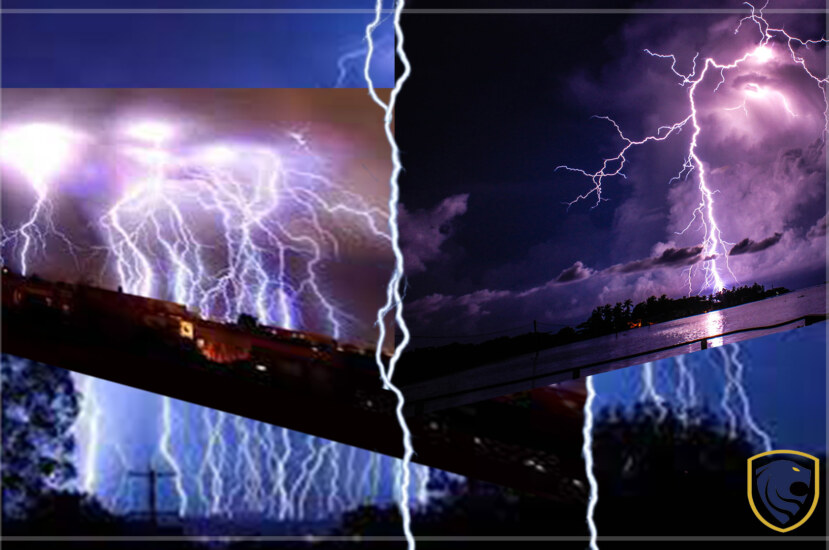The Non-stop Lightning happens nearly 300 nights a year. And it has been going on for as long as people have been around to observe it. And while the eye-catching phenomenon is awe-inspiring, it has implications beyond aesthetics.
In this article, we’ll explore what causes the Non-stop Lightning, and what effects it has on the environment. Moreover, how scientists study it and why people who live near the region don’t seem bothered by its almost nightly presence.
What is Non-stop Lightning?
Non-stop lightning is one of the most spectacular sights you’ll ever see. Just as it sounds, lightning occurs during thunderstorms near the mountaintops of Catatumbo, a region in northern Venezuela. The name “Catatumbo” comes from the language used by a native tribe and means “cracked mountain.” In this case, we’re talking about an entire mountain range, not just a remote location.
There are some claims that lightning can be seen up to 300 nights a year in the area (which were disproven by Venezuelan scientists). In contrast, observations only happen between mid-October and early April during the nighttime hours when thunderheads are active. Lightning is most common when the weather is calm, and skies have been clear for a while. It’s also not that intense, which makes it very different from the more destructive types of lightning we usually associate with thunderstorms.

lightning strikes in Venezuela
According to BBC Earth, thunderstorms are common in the region, with an average of about 15 every day. However, this isn’t a constant state; the weather changes depending on the mountain range’s area affected by the storm. There can be a lull of up to five days between storms and then a cluster of storms that last for a week. In any given year, there are typically 10-20 days with thunderstorms, according to the BBC.
What causes Catatumbo lightning?
As with most natural phenomena, there are multiple factors involved, but the main one is temperature differences between the ground and the upper atmosphere.
The region is on the boundary between tropical and subtropical weather systems. A typical mountain range like this would protect from rainstorms. Because air masses moving in opposite directions would collide, creating an area of high pressure. The warm air from the lower pressure area would move up to the mountain range and then meet cold air coming from higher up. This creates a high-pressure zone that prevents rain and wind from traveling into the mountain range.
The effect is magnified on the mountain top where there are few natural obstructions like a cloud ceiling of clouds, Which can form a protective layer over the region and prevent lightning from occurring. However, with no natural barriers, Catatumbo has almost no protection against lightning. Especially when the weather dissipates and the winds are calm. This is the perfect place for storm systems to develop quickly; in just a few hours, the air can warm and create convection that may produce lightning.
The Catatumbo area is also near an ocean which helps contribute to lightning; the average temperature of the region is 18° Celsius (65° Fahrenheit), while it’s above 26° Celsius (78° Fahrenheit) in the ocean waters.
How Does Catatumbo Lightning Affect Climate Change?
Lightning is powered by heat energy released through friction between charged particles and doesn’t involve much oxygen. So, it’s not a major contributor to greenhouse gases like carbon dioxide. But it’s still significant since it occurs at such a high frequency. According to the BBC, a total of 5.2 petajoules (1,000 terawatt-hours) of energy is released each year from this one region that would have otherwise been stored in plants and animals.

lightning strikes in Venezuela
This means more energy is released via Non-stop lightning than what is created through hydroelectric power plants in the country. This energy isn’t going to be used to power anything. But it will help prevent global warming and allows Venezuela to keep a lower emission rate than it would otherwise have. That means there are benefits for the environment despite not being the typical source of greenhouse gas emissions.
How Can You See Catatumbo Lightning?
With so many different factors that contribute to its occurrence, you can’t just go out and count lightning strikes. But you can observe the area in other ways. If a storm is brewing, you’ll see fogs spreading over the mountain when they come in contact with cold air on the mountain top. If a thunderstorm is approaching, you’ll see clouds surrounding the mountain. And then lightning struck within seconds of that event, making itself visible.
You can also take advantage of the fact that it’s usually cloudy. But at night you don’t have to be in the area to witness Non-stop lightning. There are videos of people around the world who live near Catatumbo who were able to view lightning in other parts of the world. The BBC Earth website has a great video showing lightning that is visible from all over the globe.
How Do Scientists Study Catatumbo Lightning?
Scientists have been studying Catatumbo lightning for a while, but there’s never been a whole lot of scientific data available on what causes it and how it affects local animals. They’ve compiled some interesting findings, though, and one, in particular, could indicate that these flashes of lightning indicate climate change.
In 2010, a team of Venezuelan scientists led by Milton Miguel Castro, director of the National Physics Institute did research. They examined the possibility that Catatumbo lightning was an indicator of climate change. Researchers analyzed data from 1903 to 2009 and found that lightning activity in the area was consistent with the normal fluctuation of lightning activity in Venezuela. But when they compared the activity to lightning strikes around the world, they noticed that it was off by about 20%.

lightning strikes in Venezuela
The researchers also found evidence that air currents were getting more intense, increasing the occurrence of lightning and storms. They also found evidence for higher temperatures in areas near Catatumbo. But this only applied to nighttime temperatures; they’re not sure why this is happening yet.
While the Catatumbo lightning is an interesting phenomenon in and of itself, climate change is what is causing it. The storms on the mountain top don’t just gather naturally; they’re magnified by global warming. As temperatures rise around the world, the air becomes more turbulent and unstable. That allows for the formation of thunderstorms and lightning. This means there’s no need for convection to create warm air. So, when a storm develops, it can happen more quickly and stronger than before.




